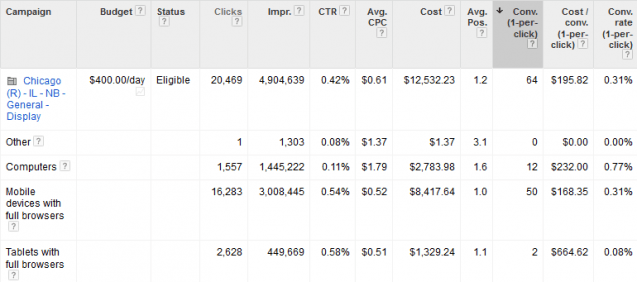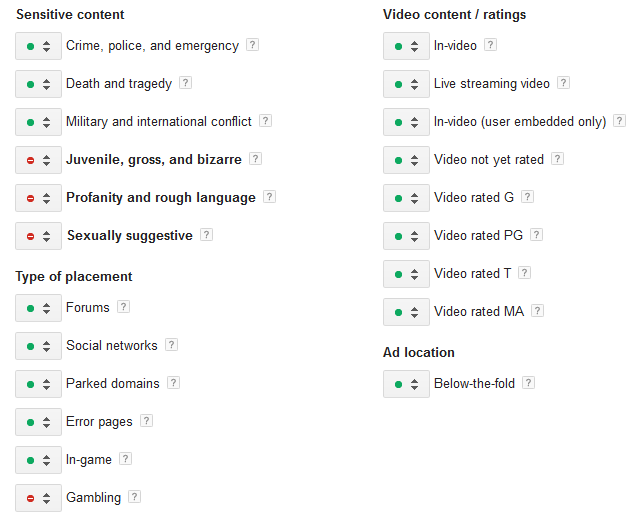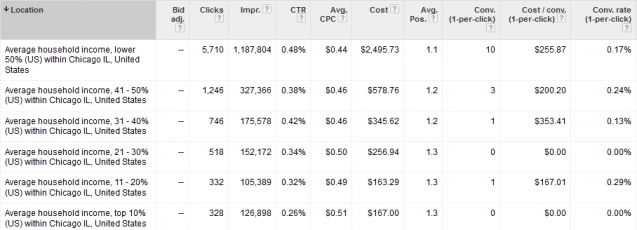As a paid search marketer, I’ve spent the majority of my career managing search campaigns—focusing my time on keywords, ad copy, account structure, bids, match types, campaign settings, and landing pages. As display advertising has improved over the years (and search network CPC’s have risen dramatically in certain verticals), I now understand the need for display advertising for many of our clients.
How to Optimize Google Display Campaigns
Managing a display campaign is a bit different from managing a search campaign even when the purpose of both campaigns is to generate leads and sales (and not necessarily branding). In addition, you must understand that results will differ, especially in terms of click-through rate when looking at search vs. display.
There are more factors to consider when you are optimizing display advertising compared to search. Here are some things to look at when you’re running Google display campaigns:

- Ad Group & Keyword Performance – Similar to search, you can see performance of your display advertising campaigns (if contextually targeting) at the keyword level. All keywords are treated as broad match when using keywords in display advertising. So, make sure if you simply copy over your search campaigns, you get rid of duplicate keywords, even with multiple match types, as they would technically be read as the same keyword.
- Ad Performance – Display ads introduce several different ad types in addition to the standard text ads in search, and it’s important to watch performance of all ad types. You might also consider having them in separate ad groups to better keep an eye on performance. For the most part, I’ve seen text ads perform better from a cost per conversion standpoint (some times the cost per conversion for image ads have been 5 to 6 times higher than text ads). However; image ads definitely have more of an impact on brand awareness and assisting future conversions (i.e. view-through conversions and attribution).
- Device Performance – Reviewing performance by device and using bid modifiers for mobile to bid higher or even exclude mobile completely is something that needs analyzed regularly just like your search campaigns.

- Placement Performance – It’s crazy to see the amount of sites your display ads can appear on. You MUST watch your automatic placements regularly and exclude poor performing sites and sites that are irrelevant to your business.

- Geographic Performance – Analyzing performance by country, region/state, and city is just as important as it is in search. This information can be found in the dimensions section of AdWords.

- Hour of Day and Day of Week Performance – Similar to geographic performance, hour of day and day of week performance can be found in the dimensions section of AdWords. Be sure to look at this data and consider bidding up/down or excluding hours with poor conversion performance.

- Conversion Performance – Display not only has click conversions, they also track view-through conversions which throws another wrench in understanding the performance of your display campaigns. View-throughs typically have a much lower value than click conversions, but it’s up to you and your business to determine their value. If you are heavily invested in display, it’s important to have a proper attribution model in place to see what the true value of your investment is.
- Category Exclusions – Category exclusions are categories of web sites that you can choose to exclude from your campaigns. Unfortunately, Google no longer lets you see performance by these different ‘categories’, but at least you still have the ability to exclude them.

- Reach and Frequency – another report unique to display is the ‘reach and frequency’ report under the dimensions section of AdWords. Frequency is the number of times your ad is seen by a user.
You can change the frequency cap under the campaign settings (this may be especially important with your remarketing campaigns):

- Demographic Performance – unlike search campaigns, you can see performance by gender and age groups and actually use bid modifiers or completely exclude.
Performance by Gender

Performance by Age

Performance by Income – under location targeting in campaign settings, you can choose location groups, by selecting ‘locations by demographics’. You then need to choose all of the average household incomes you want to have data for and bid differently for. This is also available for search campaigns.

I realize this list can be a bit overwhelming. My recommendation is to look at these data points independently. First, understand what you want to accomplish when you begin optimizing your display campaign; are you looking to lower your cost per conversion, improve lead quality, improve click-through rate, etc.? Then, look at each section described above.
What one change do you think will have the biggest impact? Try to make only one change at a time (unless you notice several glaring issues). Do not make multiple changes at the same time or you won’t be sure what caused a change in your campaign (good or bad). Check the results a few days later to see how your optimization impacted your overall goal. Then, try something else you think might help.
What optimization techniques do you use the most to optimize Google display campaigns? What issues are you experiencing with Google display and how have you resolved them?
Image Credits:
Featured image: Shutterstock.com (purchased under license)
Screenshots taken 2014 March 05




